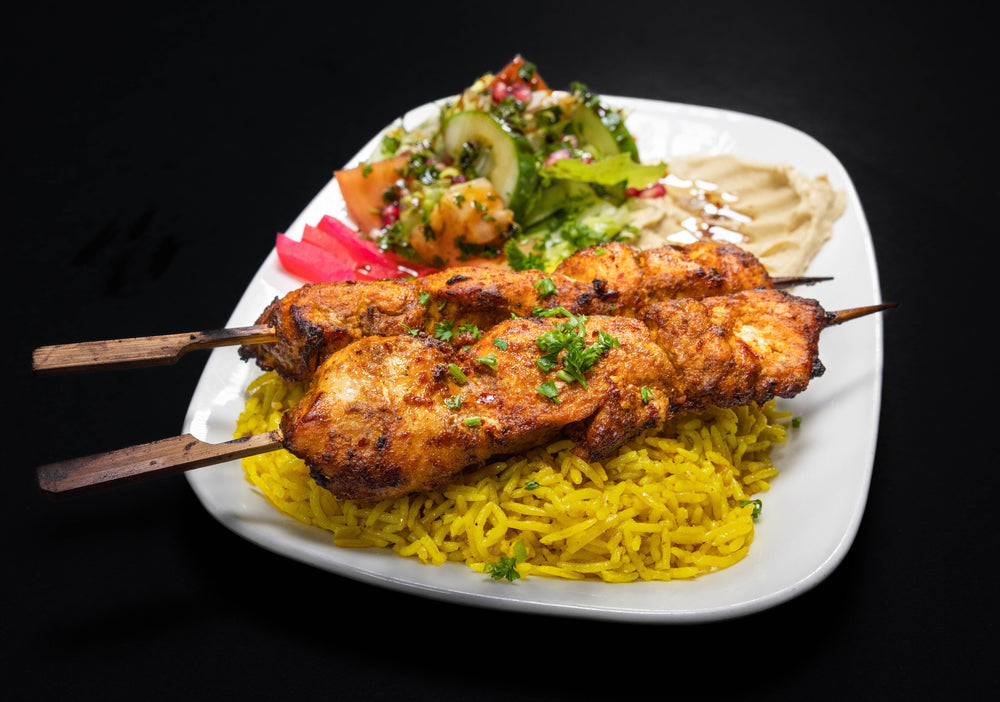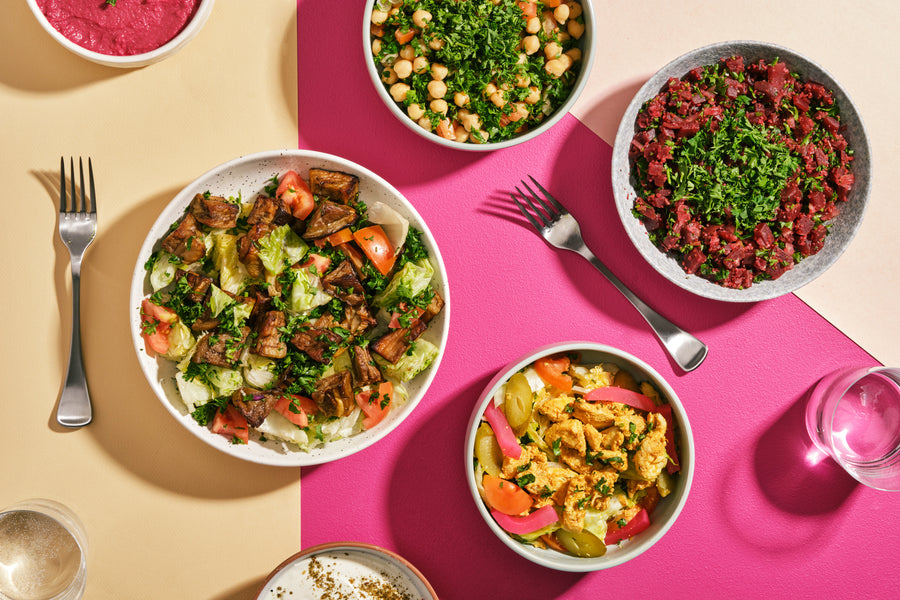All About the Rich Flavors and Traditions of Syrian Cuisine: A Culinary Journey
Syrian food offers a special blend of flavors and traditions that show its rich cultural background. With staple active ingredients like olive oil and garlic, along with a variety of seasonings, the recipes are both diverse and inviting. From the complex preparation of kibbeh to the sweet attraction of baklava, each element of this cooking landscape exposes deeper stories. As one discovers the essence of these flavors, a greater understanding of communal eating and celebration arises.
The Essence of Syrian Components
The essence of Syrian active ingredients exists in their rich variety and deep-rooted social value. Influenced by the country's diverse location and history, Syrian food integrates a vast array of spices, herbs, and fresh fruit and vegetables. Staples such as olive oil, garlic, and lemon offer a structure, while spices like coriander, sumac, and cumin add depth and complexity to dishes.The use fresh natural herbs, including parsley and mint, highlights the significance of seasonal components. Additionally, the area's fertile dirt yields an abundance of vegetables and fruits, such as pomegranates, eggplants, and tomatoes, which are important to lots of recipes. Grains like bulgur and rice create the base of numerous dishes, highlighting the importance of these ingredients in Syrian culture. This mix of tastes mirrors not just a cooking tradition however additionally a tapestry of historic influences, making Syrian components necessary to comprehending its cuisine's dynamic personality.

Iconic Dishes of Syrian Food
Syrian food is renowned for its iconic recipes that display a rich tapestry of flavors and appearances. Typical meze plates use a range of small recipes that tantalize the taste, while hearty main dishes offer rewarding focal points for meals (Afternoon Tea Vancouver). To finish the experience, a choice of savory treats includes a wonderful note to the cooking trip
Standard Meze Plates

Hearty Key Courses
Passionate primary training courses act as the focal point of Syrian dining, showcasing a blend of tastes that reflect the country's rich cooking customs. Dishes such as kebab hindi, featuring marinated lamb skewers, and the popular mujaddara, a calming mix of lentils and rice, highlight the usage of fragrant seasonings and fresh ingredients. One more staple is the famous kibbeh, made from bulgur wheat and minced meat, usually served in different types, consisting of baked, fried, or raw. Additionally, the flavors of the land come active in recipes like stuffed veggies, known as mahshi, which are loaded with rice, meat, and natural herbs. These major courses not just please hunger but additionally tell tales of family members gatherings and cultural heritage.
Savory Treats Selection
A delightful array of treats specifies the pleasant side of Syrian food, supplying an alluring end to any meal. Among the most celebrated confections are baklava, fragile layers of phyllo pastry full of nuts and drenched in syrup, and maamoul, shortbread-like cookies usually packed with nuts or days. Knafeh, an abundant treat made from slim noodle-like pastry saturated in syrup and split with cheese, is a preferred option, particularly during joyful events. Additionally, the fragrant and pleasant rice pudding, called roz bil laban, provides a soothing coating. These savory desserts not only showcase the region's cooking proficiency but also show the cultural heritage of Syria, making them valued deals with in both homes and restaurants alike.
Standard Cooking Techniques
Modern-day eases have actually influenced several culinary techniques, traditional food preparation methods remain necessary to Syrian cuisine. These methods typically emphasize the usage of fresh, seasonal ingredients and concentrate on slow food preparation to create abundant tastes. Strategies such as grilling, braising, and cooking are common, permitting the natural tastes of the components to radiate through.One remarkable strategy is the preparation of kibbeh, a meal made from carefully ground meat and bulgur. It calls for skillful hand-rolling into numerous shapes and can be baked, fried, or offered raw. Furthermore, the art of making bread, especially pita, is main to many meals, commonly cooked in a typical rock oven.Preservation methods like pickling and fermenting additionally play an essential function, boosting the variety of flavors located in Syrian dishes. These methods not just show the area's farming heritage however additionally cultivate a solid feeling of neighborhood via shared cooking techniques.

The Function of Spices in Flavor
Flavors function as the heartbeat of Syrian food, instilling meals with intricate flavors and fragrant depth. Each seasoning plays an essential role, contributing not just to preference yet likewise to the cultural heritage of the area. Commonly made use of spices consist of cumin, coriander, and sumac, each supplying a special account that raises conventional dishes. For instance, cumin gives warmth and earthiness, while sumac includes a zesty brightness, enhancing the general dish.Syrian chefs typically mix seasonings to create harmonious accounts, reflecting the elaborate equilibrium of tastes that define the food. The usage of spices is not merely for seasoning; it likewise serves to protect food and improve its nutritional value. This thoughtful unification highlights a deep understanding of the cookeries, where seasonings come to be crucial storytellers, communicating the rich history and varied impacts that identify Syrian gastronomy. Ultimately, seasonings are crucial in crafting memorable and genuine Syrian recipes.
Celebratory Dishes and Festive Custom-mades
Congratulatory dishes in Syrian food are noted by conventional feast dishes that mirror the nation's rich culinary heritage. Special occasions commonly include special rituals that boost the common experience of dining. These customs not only recognize the importance of the occasions yet additionally reinforce domestic and cultural bonds.
Traditional Feast Dishes
When families collect to commemorate substantial events in Syria, typical feast recipes take spotlight, showcasing the rich cooking heritage of the area. These gatherings commonly feature vivid platters of mezze, consisting of hummus, baba ghanoush, and look at here now tabbouleh, which function as wonderful starters. The major program typically highlights lamb or hen, marinaded and cooked to perfection, usually gone along with by fragrant rice pilaf or bulgur. One of one of the most cherished recipes is maqlooba, a layered rice meal with vegetables and meat, turned inverted prior to offering. Sugary foods additionally play a critical role, with baklava and knafeh supplying a pleasant finish to the meal. Each recipe not only delights the taste but likewise reflects the ingrained practices and communal spirit of Syrian culture.
Special Event Rituals
Special occasions in Syria are marked by abundant routines that intertwine food and festivity, reflecting the cultural significance of public events. Congratulatory dishes commonly include typical meals such as kibbeh, tabbouleh, and numerous barbequed meats, prepared with treatment and shared among friends and family. During spiritual holidays like Eid al-Fitr and Eid al-Adha, family members collaborated to prepare special desserts like maamoul, representing unity and joy. Wedding events are especially elaborate, including multiple programs and vivid display screens of hospitality. These occasions are not just concerning food; they encompass music, dancing, and narration, enhancing social bonds and cultural heritage. Through these rituals, Syrians commemorate life's milestones, making sure traditions are given via generations, enriching their culinary landscape.
The Value of Sharing and Area
Sharing meals is a fundamental facet of Syrian society, showing the ingrained worths of neighborhood and connection. In Syria, food is not just food but a method of bringing people together. Buddies and families collect around the table to enjoy conventional dishes, promoting bonds and creating long lasting memories. This common eating experience emphasizes hospitality, where hosts most likely to fantastic sizes to assure every visitor really feels welcomed and nourished.The act of sharing food also represents generosity and solidarity, reinforcing social connections within communities and larger communities. Throughout gatherings, it is usual for individuals to offer each various other, showcasing a spirit of togetherness that transcends uniqueness. Events, whether tiny or large, are commonly marked by the sharing of dishes, where varied flavors and recipes come together, mirroring the rich tapestry of Syrian culture. As necessary, the importance of sharing and neighborhood in Syrian food is not just a culinary tradition but an essential social method.
A Cooking Expedition of Syrian Sugary Foods
Although frequently outweighed by savory dishes, Syrian sweets hold a valued place in the country's cooking heritage. These confections reflect the area's abundant background, blending flavors and techniques from different cultures. Conventional desserts like baklava, with navigate to this website its layers of phyllo pastry, nuts, and honey syrup, display the artistry associated with Syrian food preparation. Ma'amoul, a shortbread-like cookie filled up with nuts or dates, is typically prepared for cheery occasions, symbolizing hospitality and celebration.Another precious wonderful is Knafeh, a pastry taken in syrup and layered with cheese or lotion, supplying a delightful comparison of textures. Syrians additionally appreciate a selection of fruit protects and syrups, typically served with tea or as component of a bigger spread during celebrations. These sweets not only satisfy the palate yet likewise function as a bridge between generations, protecting the traditions and tales of Syrian society through each delicious bite
Regularly Asked Questions
What Are the Health Advantages of Traditional Syrian Foods?
The health and wellness advantages of traditional Syrian foods consist of abundant nutrients from fresh vegetables, beans, and whole grains. These active ingredients advertise heart health and wellness, improve digestion, and supply necessary vitamins, contributing to overall health and a balanced diet regimen.
How Has Syrian Cuisine Developed Over the Years?
Syrian food has actually progressed considerably, affected by historic profession courses, cultural exchanges, and local availability of components. Traditional recipes have actually integrated contemporary flavors and methods while maintaining their abundant heritage, mirroring a diverse culinary landscape.
Exist Vegetarian or Vegan Options in Syrian Cuisine?
Syrian food uses various vegetarian and vegan alternatives, featuring dishes like falafel, tabbouleh, and packed grape fallen leaves. These meals highlight the region's rich farming heritage, showcasing fresh veggies, grains, and aromatic flavors in vivid combinations.
What Beverages Pair Well With Syrian Dishes?
When thinking about drinks that complement Syrian dishes, one may discover that mint tea, pomegranate, and ayran juice improve the meal's browse around this site flavors. Furthermore, red white wine often pairs well with the spices frequently discovered in these foods.
Exactly How Can I Recreate Syrian Dishes at Home?
To recreate Syrian dishes in your home, one need to check out authentic dishes, gather traditional components, and utilize cooking methods distinct to the cuisine. Trying out flavors and presentation likewise improves the overall dining experience. Syrian food is renowned for its renowned dishes that display an abundant tapestry of appearances and tastes. Seasonings offer as the heartbeat of Syrian cuisine, infusing meals with complex flavors and aromatic deepness. Celebratory meals in Syrian food are marked by standard feast dishes that show the nation's rich culinary heritage. Events, whether large or little, are typically marked by the sharing of meals, where varied tastes and recipes come with each other, showing the abundant tapestry of Syrian culture. Syrian food provides various vegan and vegan choices, featuring recipes like falafel, tabbouleh, and packed grape leaves.